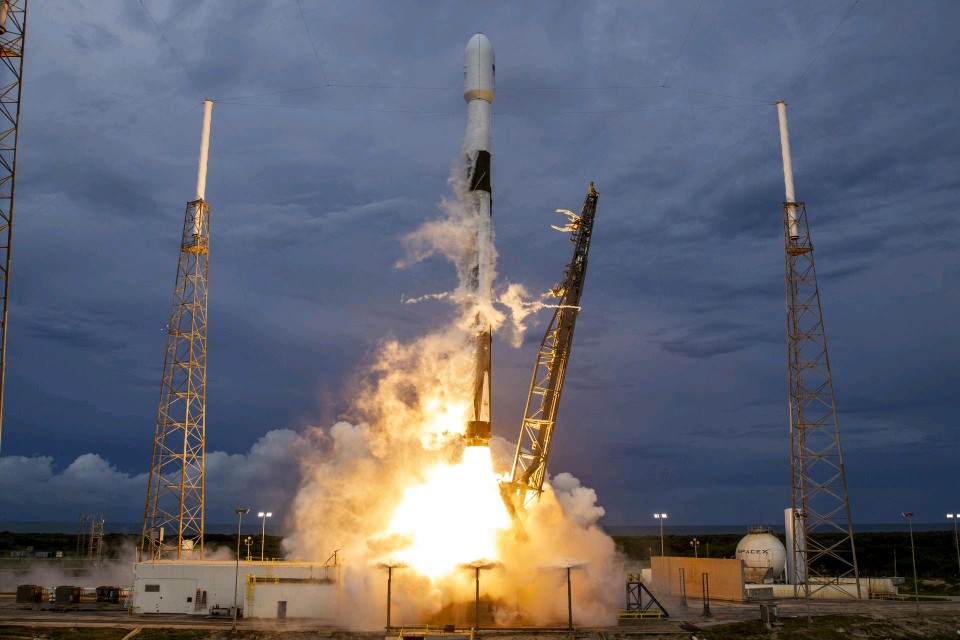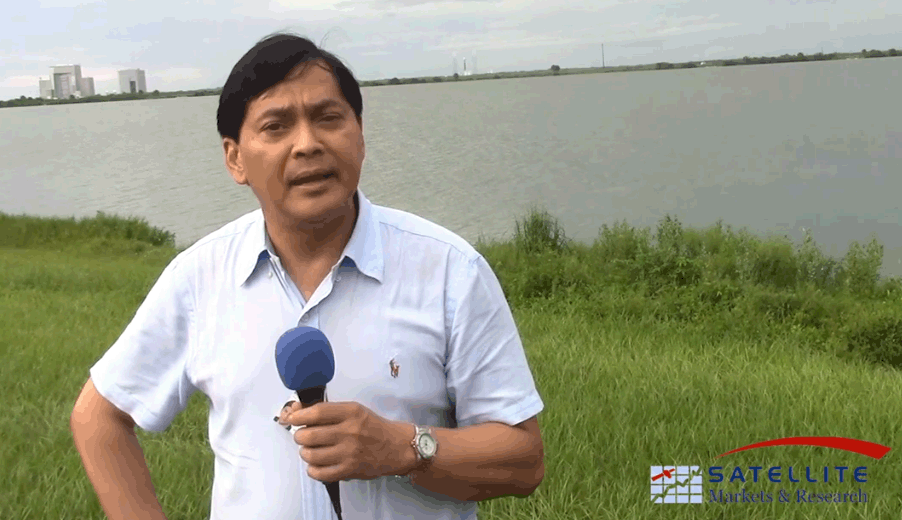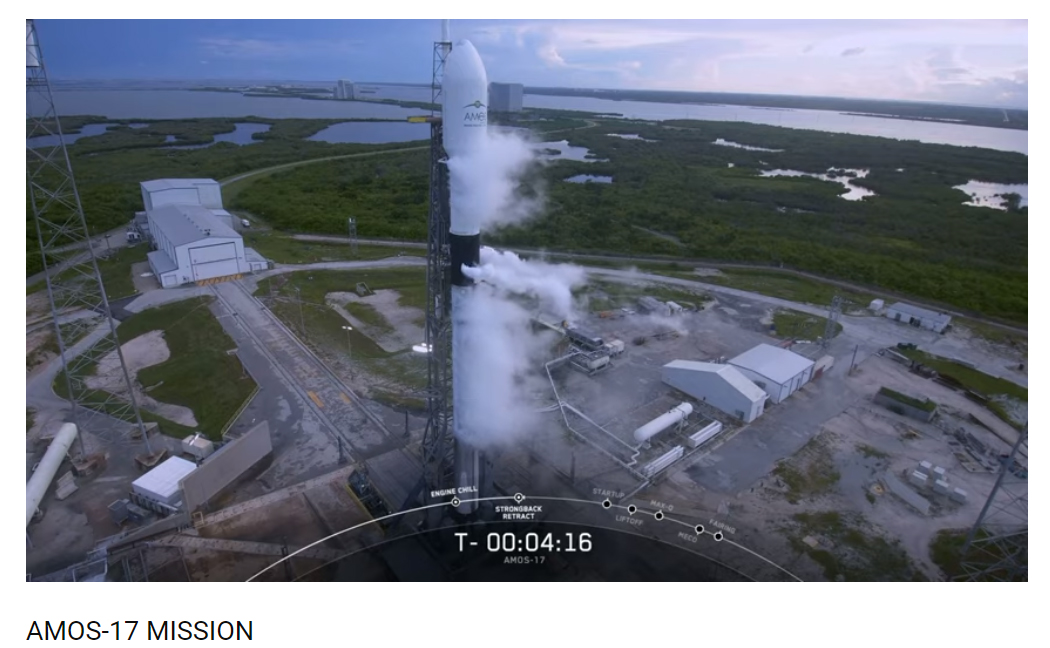Amos-17 Satellite Successfully Launched
Cape Canaveral Air Station, Florida, August 6, 2019--SpaceX’s Falcon 9 rocket successfully lifted off from Space Launch Complex 40 of the Cape Canaveral Air Force Station, Florida, the AMOS-17 satellite for Spacecom (Tel Aviv Stock Exchange: SCC). Liftoff occurred at 7:23 p.m. EDT, or 23:23 UTC and the satellite was deployed approximately 31 minutes after liftoff.
This was the third and final flight for this particular Falcon 9 first stage, having previously used for the launches of the Telstar-19 VANTAGE mission in July 2018 and the Es’hail-2 mission in November 2018. In order to focus on the launch of Amos-17, Spacex decided not to reuse this particular Falcon 9 first stage. In September 2016, Spacex previously encountered a catastrophic failure during a static fire test of the Falcon -9 rocket prior to launch, destroying the Amos-6 satellite. Amos-17 is a replacement satellite for Amos 6.
 During the next weeks, AMOS-17 will begin its testing processes in orbit. Following a sequence of In-Orbit Tests that are expected to take approximately three months, AMOS-17 is scheduled to begin commercial operations at the 17°E orbital position later in 2019.
During the next weeks, AMOS-17 will begin its testing processes in orbit. Following a sequence of In-Orbit Tests that are expected to take approximately three months, AMOS-17 is scheduled to begin commercial operations at the 17°E orbital position later in 2019.
Manufactured by Boeing Satellite Systems International, AMOS-17 is 6.5-ton high-power, high throughput satellite designed specifically to meet Africa’s fast-growing communication demands. AMOS-17’s advanced digital payload will operate in the C, Ku and Ka bands with a digital channelizer to provide fixed high throughput (HTS) C-band coverage to Africa, steerable HTS Ka-band coverage to anywhere from China to Brazil, and extensive Ku-band coverage throughout Africa with additional coverage in Europe, the Middle East, China, and India.
With its extensive capabilities, flexibility, and reliability, AMOS-17 is poised to support growth in a variety of broadcast, broadband, mobility and data services throughout the African continent. It will be deployed to the 17o East orbital position, right over central Africa, to optimize service in the region.
The satellite’s digital processing capabilities provide connectivity between all of AMOS-17’s beams in all available bands in any combination. These capabilities also support suppression of interference, flexible capacity allocation, and other digital processing features for improved service. Additionally, all command and control channels, as well as telemetry, are encrypted for maximum security. AMOS-17 is planned to be in operation for a minimum of 20 years, enabling long-lasting and stable service.
Spacecom CEO and president David Pollack stated, “AMOS-17 places us directly into the exciting growth of Africa’s Sub-Saharan vibrant markets. As a leading multi-regional satellite operator, Spacecom is introducing the most technologically advanced satellite with HTS beams to service Africa where AMOS-17 will deliver a large selection of services to a variety of broadcast, broadband and telecom clients.”
Spacecom (Space-Communication Ltd.), operates the AMOS-3 and AMOS-7 satellites co-located at 4°W, and AMOS-4 at 65°E, provides high-quality broadcast and communication services to Europe, the Middle East, Africa, and Asia via direct-to-home (DTH) and direct broadcast satellite (DBS) operators, Internet service providers (ISPs), telecom operators, network integrators and government agencies.
To view a video replay of the satellite launch, click here.









